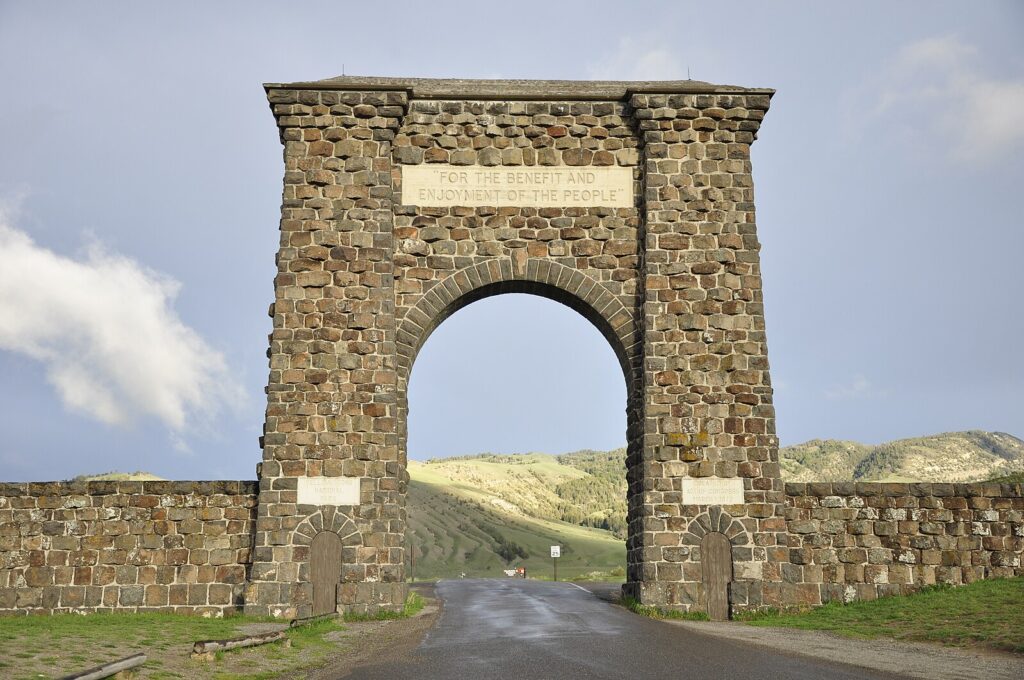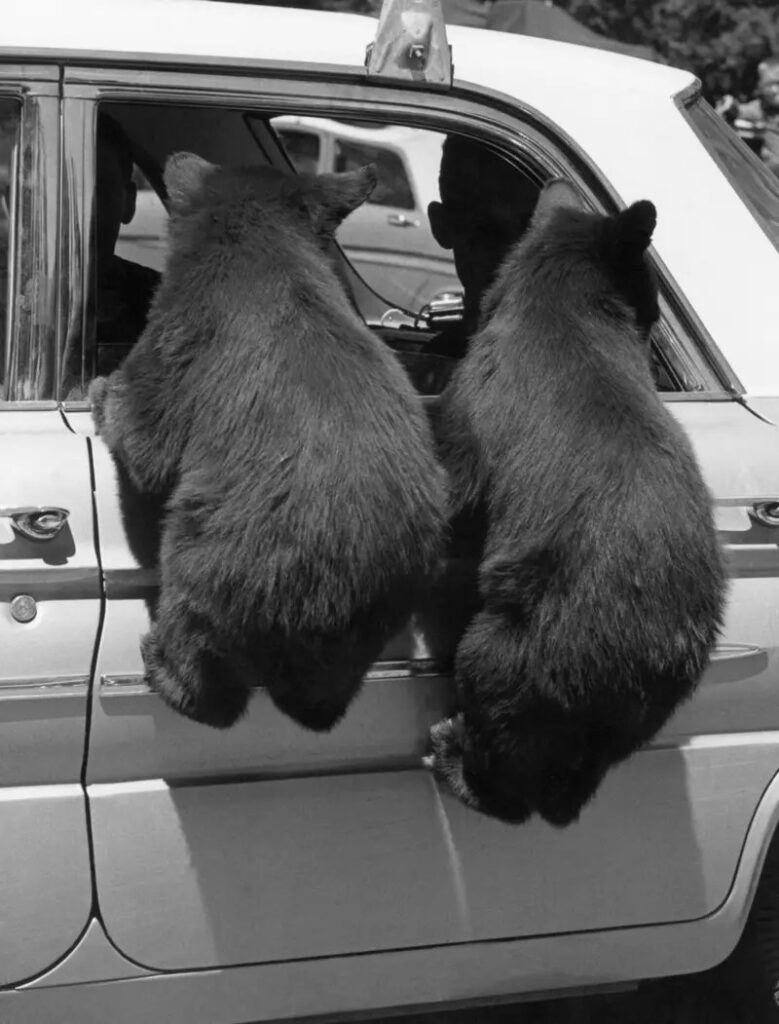
John Steinbeck was not fond of the national parks. Strange, but true. Introducing his chapter on his brief and abortive visit to Yellowstone National Park in mid-October 1960, Steinbeck wrote, “I must confess to a laxness in the matter of National Parks.” He said he could not get excited about “the greatest waterfall, the deepest canyon, the highest cliff …” He said the only reason he dipped down to Yellowstone National Park was that if he didn’t, his friends would chide him: “You mean you were that near Yellowstone and didn’t go?” Steinbeck huffed, “Yellowstone National Park is no more representative of America than is Disneyland.”
On his 11,500-mile road trip, without traveling too far out of his way, Steinbeck might have visited Acadia National Park (1929), Mount Rainier (1899), Crater Lake (1902), Glacier (1910), Grand Canyon (1919), Great Smoky Mountains (1934), Big Bend (1944), and of course Theodore Roosevelt National Memorial Park (as it was then called, established 1947). He may have entered Theodore Roosevelt NMP, though he never mentions the badlands by that name. He never mentions the Little Missouri River, the heart of the badlands of North Dakota. Clearly, national parks were not important to Steinbeck, or at least not worth seeing for himself.

Steinbeck drove south of Livingston, Montana, to the Roosevelt Arch at Gardiner, the North Entrance of Yellowstone, to shut up his friends. At the entrance kiosk, a ranger warned him to keep his poodle Charley on a leash. Steinbeck asked why. “Because of the bears,” the ranger said. At that point, Steinbeck gave a long speech about what a coward and pacifist Charley was. He wouldn’t disturb a caterpillar. “His greatest fear is that someone will point out a rabbit and suggest that he chase it.” Charley stood for “peace and tranquility.” The ranger repeated his warning, but Steinbeck just laughed him off.
One mile into the park, Steinbeck and Charley encountered a bear.
Let Steinbeck tell the story:
“Instantly, a change came over Charley. He shrieked with rage. His lips flared, showing wicked teeth that have some trouble with a dog biscuit. He screeched insults at the bear, which, hearing, the bear reared up and seemed to me to overtop Rocinante. Frantically, I rolled the windows shut and, swinging quickly to the left, grazed the animal, then scuttled on while Charley raved and ranted beside me, describing in detail what he would do to that bear if he could get at him.”
Look at what a great writer Steinbeck is. He lightens the tone with the quip about the biscuit and then has Charley “describing in detail what he would do to that bear. …”

Steinbeck said he had never been so astonished in his life. So far as he knew, Charley had never encountered a bear before. Up to now, Charley “had showed great tolerance for every living thing. ”A little deeper into the park, they encountered two more bears. “The effect was doubled. Charley became a monster. He leaped all over me; he cursed and growled, snarled and screamed. I didn’t know he had the ability to snarl.” Steinbeck cuffed the dog to settle it down without effect. As soon as they were away from the pair of bears, Steinbeck stopped on the side of the road and locked Charley in the camper. But when they came upon bears again, the dog went berserk back there. “I could hear canned goods crashing as he struggled in his mania.”
Steinbeck turned his pickup around and drove quickly out of the national park. “It was too nerve-wracking,” he explained, “a shocking spectacle, like seeing an old, calm friend go insane.” Steinbeck stopped to apologize to the ranger as he drove through the gate. He understood now. He drove back to Livingston and got a room in “a pretty auto court” (i.e. the kind of motel where you can drive right up to your room).
So, John Steinbeck lost his one chance to camp in Yellowstone National Park.
When they got into the room at the auto court, Steinbeck inspected Charley. “He was dazed. His eyes held a faraway look and he was totally exhausted, emotionally no doubt. Mostly he reminded me of a man coming out of a long, hard drunk — worn out, depleted, collapsed. He couldn’t eat his dinner, he refused the evening walk, and once we were in he collapsed on the floor and went to sleep. In the night I heard him whining and yapping, and when I turned on the light his feet were making running gestures and his body jerked and his eyes were wide open, but it was only a night bear.”
Steinbeck concludes the chapter with grace and wisdom: “I wonder why we think the thoughts and emotions of animals are simple.”

This incident happened back in the day when tourists fed the Yellowstone bears by the side of the road. That era, fortunately, has passed (though it would be kind of cool). In principle, I’m against any effort to anthropomorphize wild creatures, such as “adopting” individual wolves in Yellowstone and bestowing names on them or grizzly bears, one of which is known to smarmy tourists as Raspberry.
Steinbeck indicates an understanding that the park boundaries do not delimit the movement of wild creatures like mountain lions, buffalo, wolves, moose, and bears. “I was reluctant to camp [north of the park boundary],” he said, “for fear there might be some unofficial non-government bears about.” Again, Steinbeckian humor. Though massive, Yellowstone National Park embraces only one-tenth of what is known as the “Greater Yellowstone Ecosystem.” Wild creatures do not conform to arbitrary human boundaries — this is the source of a great deal of confusion, conflict, and misunderstanding in and near Yellowstone and other national parks.
So national parks did not have any allure for John Steinbeck. He was even ho-hum about Niagara Falls, which he visited only to shut up his friends. The only historical sites he visited were the Little Bighorn battlefield south of Billings, and then only for a short and uneventful visit, and Fremont Peak in Monterey County, California.
So the question is: besides his wife Elaine, whom he missed sorely on the journey, and his stubborn commitment to drive the entire perimeter of the United States (once begun, he could hardly throw in the towel), what interested Steinbeck on his journey, what caught his attention, what did he choose to explore and observe?
That’s the question I am trying to answer as I retrace his journey.
I asked my friend, Nate Calderone of Salida, Colorado, to draw one of his splendid caricatures to depict the moment when the highly refined French aristocratic poodle (a known coward and poltroon) heard the call of the wild.
Over the next few months, Clay is shadowing Steinbeck’s 10,000-mile trek around the USA (and making a few detours of his own). Clay’s expedition is a central part of LTA’s big initiative to explore the country and take the pulse of America as it approaches its 250th birthday. Be sure to follow Clay’s adventures here and on Facebook — and subscribe to our newsletter.
